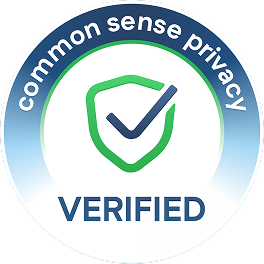Take a look inside 9 images
ThinkCERCA
Pros: High-interest texts, excellent supports, and great feedback tools for teachers.
Cons: Content could be more timely. More discussion/collaboration would increase liveliness.
Bottom Line: This is an expertly scaffolded and pedagogically sound resource for developing critical reading and writing skills.
Take a spin through ThinkCERCA's demo content to get a sense of how it might work in your classroom: browse writing modules by subject area and then by content area (e.g., civics) or theme (e.g., Catalysts for Change). Modules can be adjusted to be more or less challenging and then assigned. Make sure to click over to the Lesson Supports section of modules to find a teacher guide and differentiation materials. For students who need to build specific skills, there's a library of Skills Lessons and Direct Instruction lessons that offer targeted development of foundational knowledge that students will need for the modules.
Teachers can arrange for whole-class access to the site during the school day or, if possible, assign students to read specific articles as part of a flipped classroom. In either scenario, teachers can meet with individual students while the rest of the classroom attends to their assigned work. ThinkCERCA could also be a good fit for supporting a weekly routine of assessing students' reading comprehension. Since ThinkCERCA includes benchmark assessments that can be spaced out at the beginning, middle, and end of the year, teachers could rely on these to gauge where students are at and adjusts assignments individually as needed.
ThinkCERCA's engaging articles serve as good support for thematic units in language arts, social studies, math, or science. The articles could serve as springboards for excellent whole-class debates, small-group discussions, or timed essays for high school AP-level courses. Additionally, students could print their essays and score their peers' work, meeting in small groups to help each other and encourage better writing.
ThinkCERCA is a subscription-based online literacy program focused on critical thinking and argumentative writing skills for students in grades 3-12. The CERCA acronym (Claims, Evidence, Reasoning, Counterarguments, Audience) stands for the site's structured approach to critical thinking and argumentation. While reading one of the many text selections, students answer multiple-choice questions, respond to short-answer questions, highlight sections of text, fill in graphic organizers, and make claims about what they're reading. They're then prompted to support these claims with evidence from the text, explain their reasoning, and address possible counterarguments. Throughout, students use audience-appropriate language as they write, and they can reference a dictionary as well as a rubric to make sure their work is on target. ThinkCERCA modules each connect texts with demonstrations of understanding, whether it's creating a summary or completing a dynamic graphic organizer to form an argument. From there, students draft an essay that teachers can score with a built-in rubric.
ThinkCERCA includes benchmark assessments to gauge students' reading and writing levels, including practice assessments for the ACT and SAT. There are many tools to help students and teachers get started, including goal-setting resources and curriculum guides for teachers, plus phonics supports, visual vocabulary, and guides for student collaboration and choice. The developer also offers CERCA Slides, a weekly release of slides to use for a week of ThinkCERCA activities in the classroom, plus tips for teachers and students to make the most of the platform's features.
The teacher dashboard helps teachers measure student mastery, and there are tools for sharing data with administrators and integrating the platform with a school's existing LMS, including Google Classroom.
To see how this tool works, watch our video overview of ThinkCERCA.
Full Disclosure: ThinkCERCA and Common Sense Education share a funder; however, that relationship does not impact Common Sense Education's editorial independence and this learning rating.
ThinkCERCA is a great tool for helping teachers integrate CCSS-aligned, cross-disciplinary reading and writing instruction into their classes. Its resources align well with the critical thinking direction of Advanced Placement courses for high school students, and the text and questions can benefit students at any level and in any subject. The program's selection of high-interest texts spans a range of subject and reading abilities. Additional scaffolding tools like adjustable challenge levels, audio recordings, visual prompts, and differentiation guides for teachers make it clear this tool is for all learners. ThinkCERCA does the grunt work of gathering, curating, and organizing many high-interest readings and associated writing assignments that would otherwise prove challenging -- if not impossible -- for most busy teachers. ThinkCERCA also includes assessments with each text for individual, small-group, and whole-class assessment. Built-in rubrics and feedback tools make grading easy and consistent. However, it would be nice for the rubrics to offer some customization.
The handy argument-organizer tool walks students through lessons in the research-backed CERCA format. The reading and response windows appear side by side in a logical, dynamic, and user-friendly layout. Students can reference a dictionary as well as a rubric at any time. Teachers can differentiate via the types of questions and texts students receive, but variable complexity within each text is currently missing and would be a big benefit.
ThinkCERCA fills a critical void in the world of online literacy instruction. It's a great approach for teaching skills for substantive textual analysis and well-structured writing in concert. Still, there's potential for even more. For instance, teachers may want to support collaborative learning among students of varying abilities. A built-in tool to encourage online collaboration could help facilitate this, and such a tool would be a solid addition. The weekly CERCA Slides with timely text selections are a welcome addition too, and more tools for collaboration and timely updates will continue to make this tool stand apart as a stellar classroom resource. As it stands, ThinkCERCA provides teachers and students with an exceptionally well-developed and deep program grounded in an effective formula and backed by supporting resources and extensions. It's worth noting that ThinkCERCA has undergone three third party research evaluations, each demonstrating student growth.



















